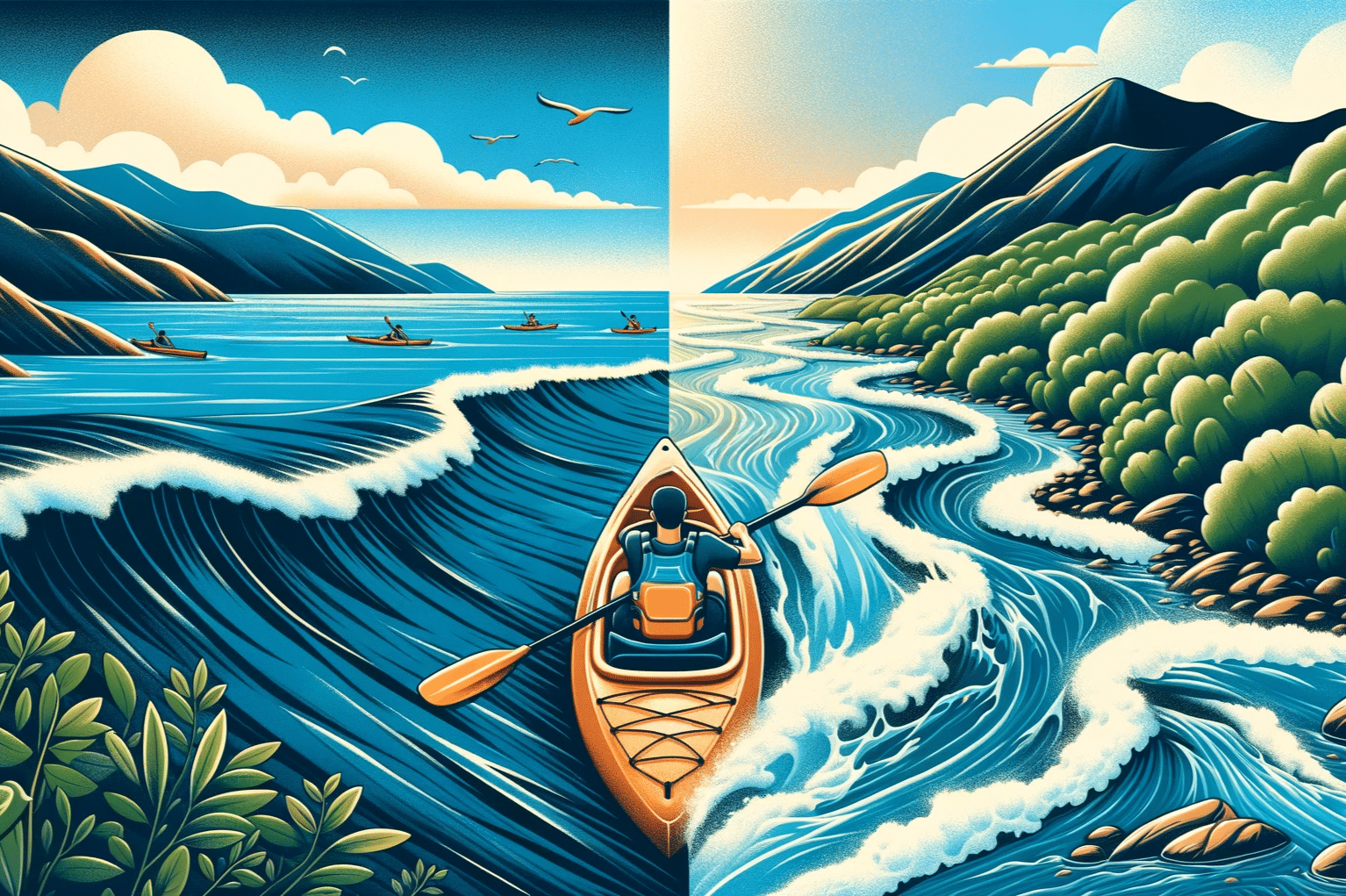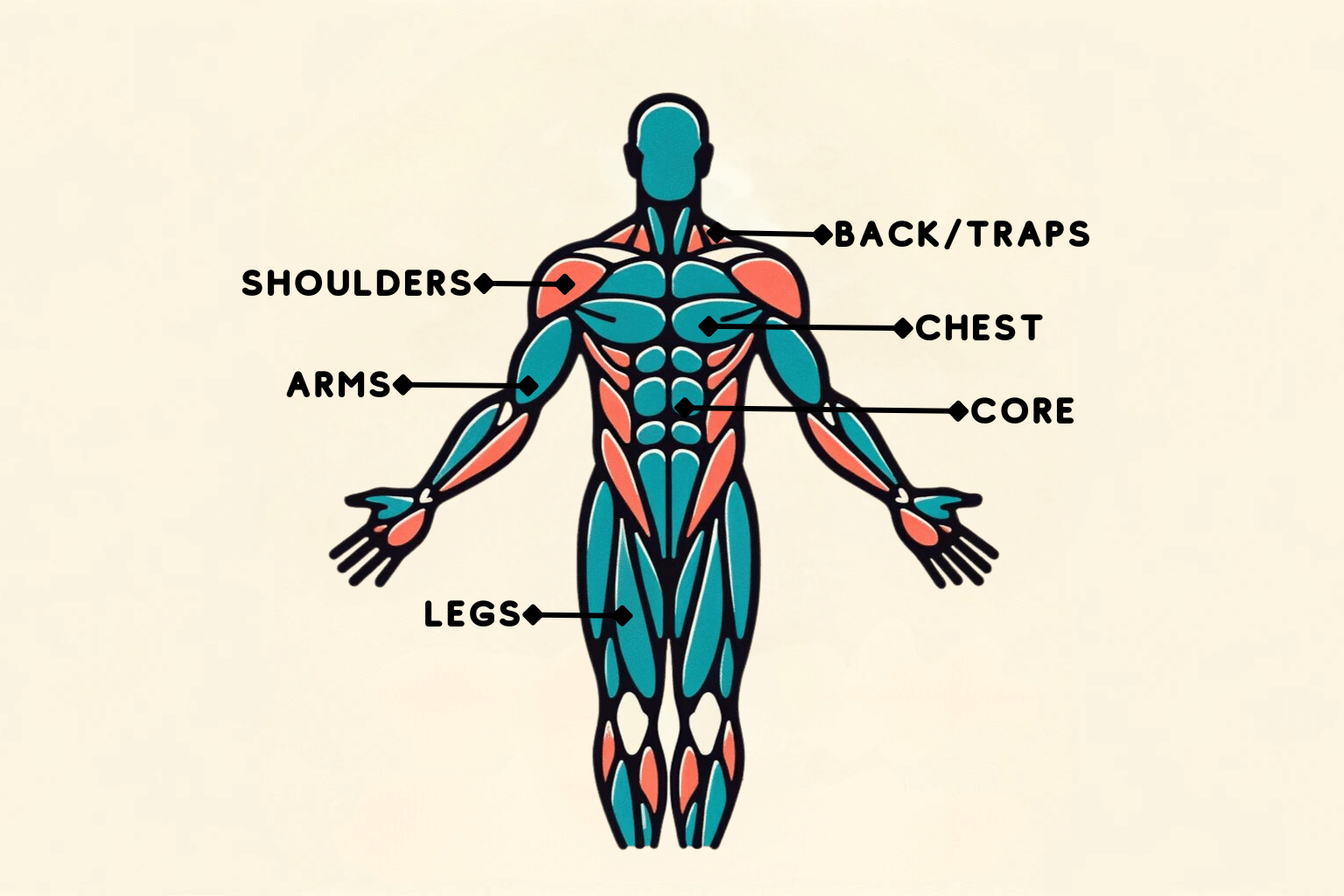Are you torn between the serene glide across a vast ocean and the adrenaline rush of navigating a fast-moving river? The choice between a sea kayak and a river kayak can make all the difference in your paddling experience. But what exactly sets them apart? Let’s dive into the 7 key differences that could steer your decision!
From the sleek, long designs of sea kayaks that cut through waves for long-distance journeys, to the compact, agile form of river kayaks made to handle rapid turns and rocky streams, each type serves a unique purpose on the water. Understanding their design, functionality, and performance in their respective environments is crucial for every kayaking enthusiast.
Yet, the distinctions don’t just end with design and function. We’ll explore how their design influences performance in the waters they navigate, the varied materials that contribute to their resilience and maneuverability, and the practical considerations that affect their storage and transport. So, let’s embark on this journey to discover which kayak will best complement your aquatic adventures.

Sea Kayaks vs. River Kayaks – Key Takeaways
☑️ Sea Kayaks: Designed for open water and long-distance trips, sea kayaks are defined by their streamlined, narrow hulls and bulkheads which aid in tracking and stability in challenging sea conditions.
☑️ River Kayaks: Encompassing a range of styles such as recreational, whitewater, and fishing kayaks, river kayaks are built shorter and broader, focusing on superior stability and agility to handle the diverse and dynamic nature of river environments.
☑️ Differences: The main distinctions between sea and river kayaks lie in their design, with sea kayaks being longer and narrower for efficient tracking, and river kayaks being shorter and wider for better maneuverability. Additionally, they vary in performance, stability, capacity for gear, and ease of transport.
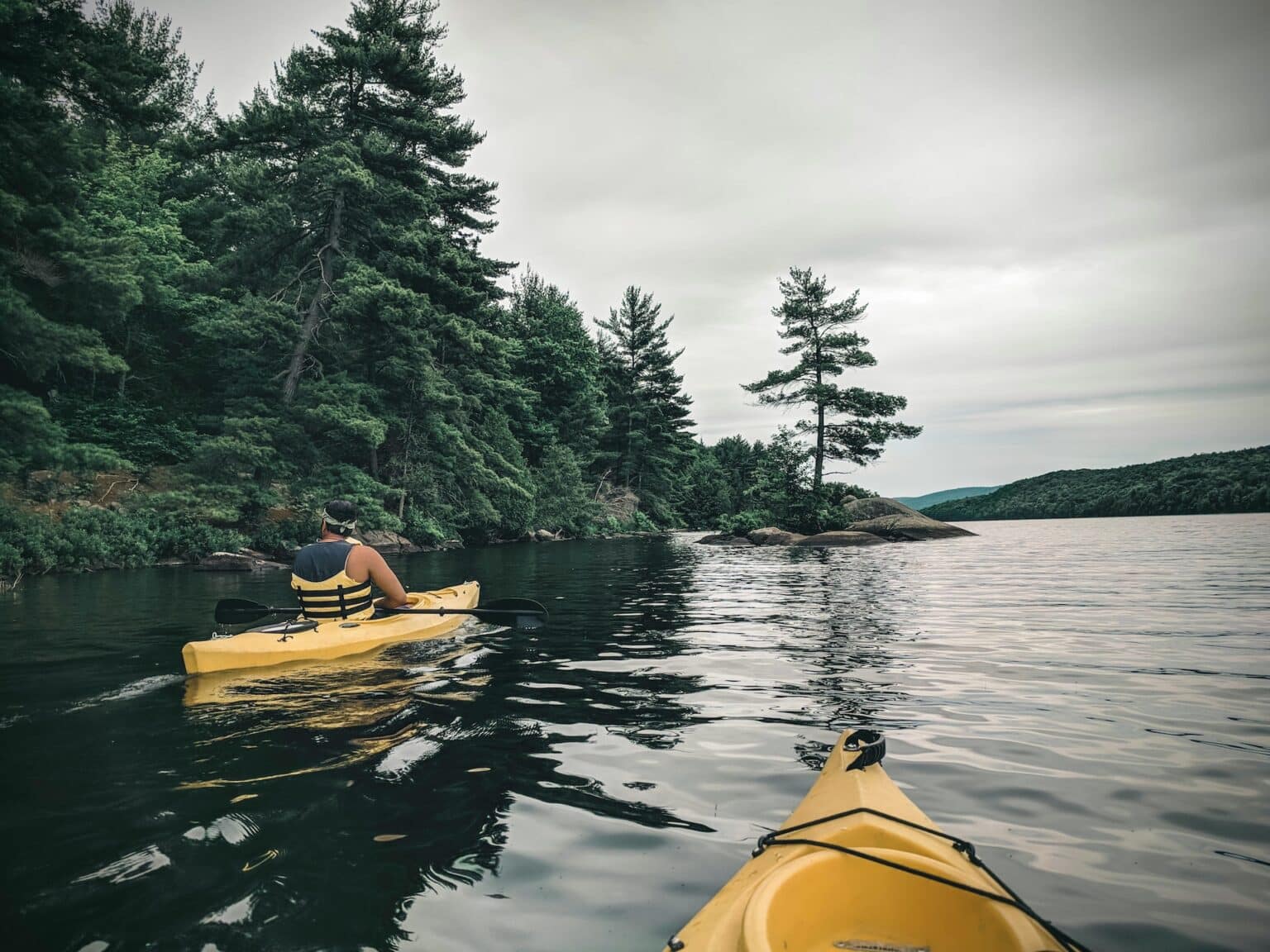
#1 Design
Hull Design
The hull design is a kayak’s foundation, shaping its interaction with the water. Sea kayaks are typically outfitted with a V-shaped hull, a design that allows for smooth and efficient cutting through waves, thus enhancing speed and aiding in navigation, or “tracking,” across long distances. This shape provides better performance in choppy sea conditions, where maintaining a straight path is challenging but essential.
River kayaks contrast with wider hulls, which distribute the paddler’s weight over a larger area, increasing primary stability – essential for dealing with turbulent waters, sudden turns, and avoiding obstacles common in river environments.
Size and Shape
The size and shape of a kayak are integral to its functionality and performance. Sea kayaks, for instance, are often longer, ranging from 12 to 24 feet in length, with a narrow beam of about 18 to 26 inches. This elongated, slender form streamlines the paddling effort, enabling greater speed and less fatigue during maritime journeys. These dimensions are also tailored to handle the constant undulation of ocean swells efficiently.
Conversely, river kayaks are built with more compact dimensions, generally measuring between 6 to 10 feet long with a wider beam upwards of 24 to 36 inches. These shorter hulls grant paddlers the agility required to navigate the diverse riverine terrain, from navigating tight turns to managing swift eddy lines and river currents. The broader beam also contributes to the kayak’s stability, which is essential for handling the often unpredictable river conditions.
Cockpit Design
The cockpit design is another crucial aspect, where sea and river kayaks diverge. Sea kayaks usually feature Sit-Inside cockpits, enveloping the paddler for insulation against cold air and water, and can be sealed with a spray skirt to prevent water ingress, crucial for maintaining warmth and reducing the risk of capsizing in rough seas. The enclosed design also adds structural integrity and rigidity to the kayak.
On the flip side, river kayaks often adopt a Sit-On-Top approach, which favors an open deck concept, allowing for swift water evacuation, easy re-boarding, and a relaxed entry and exit, proving advantageous in warmer, calmer waters and for quick immersion scenarios.
Materials
The choice of materials reflects a kayak’s intended use and the environments it will face. Modern sea kayaks are molded from advanced composite materials like fiberglass and carbon fiber, chosen for their superior strength-to-weight ratios. These materials ensure the kayak’s resilience against the harsh maritime elements while maintaining a manageable weight for transportation and handling.
Conversely, river kayaks often employ robust, impact-resistant materials such as polyethylene or thermoformed plastics, built to absorb and withstand the inevitable encounters with riverbed rocks and debris.
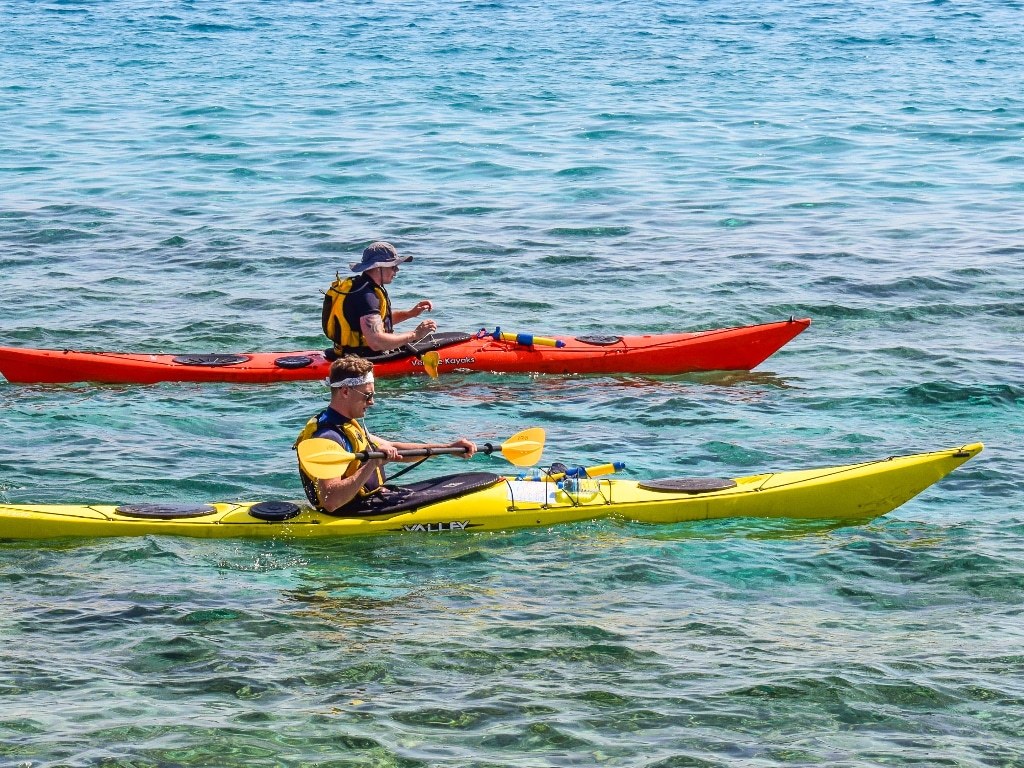
#2 Stability and Handling
What is Stability?
Stability in a kayak is about how well it resists tipping over. There are two main aspects to consider: initial stability (or primary stability) and secondary stability. Initial stability describes how stable the kayak feels when it is upright on flat water. It’s the steadiness a paddler senses when they first get into the kayak and start to paddle.
Secondary stability refers to the kayak’s ability to remain upright when it’s tilted on its edge, which is particularly important in turbulent waters where the kayak is likely to lean due to waves or currents. Kayaks with good initial stability are comforting to beginners, while those with high secondary stability are favored by experienced kayakers who face rough conditions.
Sea Vs River Maneuverability
Sea kayaks are designed with a bias toward secondary stability. They are meant to handle the unpredictability of the ocean, where choppy waters and strong currents can tilt the kayak significantly. Good secondary stability allows the kayak to edge and lean without capsizing, which is essential for handling waves and maintaining the course in the sea.
River kayaks often prioritize initial stability. While it is true that rivers can have their share of rough water, especially in sections with rapids or strong flow, many river kayaking scenarios involve calmer waters or the need for quick, responsive movements. The high initial stability offers confidence to paddlers to navigate these waters with control and agility.
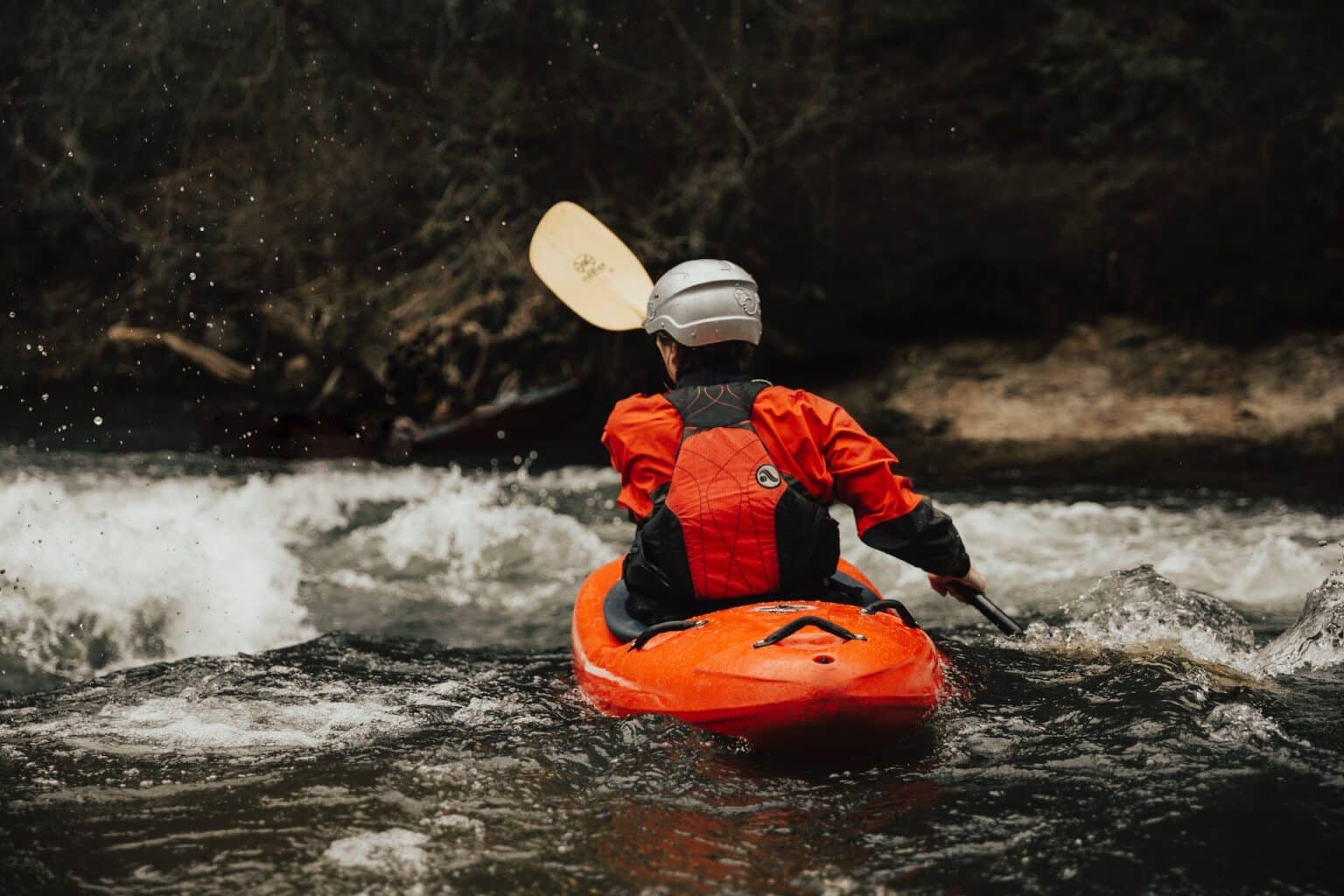
#3 Performance in Varied Conditions
Sea Kayaks
Sea kayaks are built for performance in a range of conditions, from the stillness of calm conditions to the unpredictability of choppy water. Their sleek design allows them to cut through rough water with ease, maintaining speed and direction even when strong wind picks up. The combination of a V hull shape and a longer body gives sea kayaks an advantage in both flat water and choppy seas, providing stability and efficiency over long stretches of water.
River Kayaks
River kayaks, however, are designed to excel in freshwater environments where the water can vary from calm waters to rapid flows. They typically have a shorter and wider build, which offers greater maneuverability for navigating through tight spots and around obstacles. This design also allows for quick directional changes and stability in turbulent waters, although it may reduce speed in calm conditions compared to sea kayaks.
Both types of kayaks serve their purposes well, whether it’s a sea kayak gliding across coastal waters or a river kayak bobbing through freshwater currents. Each is engineered to provide the best possible experience in the conditions for which they were designed.
#4 Gear Storage and Weight Capacity
Packing for the Trip
Sea kayaks excel in storage options, with dry compartments and day hatches designed for the gear needed on an overnight trip or even a multi-day trip. The compartments are watertight, ensuring that all equipment stays dry despite ocean spray or rain. Additionally, sea kayaks often have deck rigging and bulkheads that assist in weight distribution, crucial for maintaining stability in open waters.
River kayaks, while generally not designed for carrying as much gear, still offer storage solutions for day trips. These kayaks might have small dry bags or compartments for essentials like safety gear and provisions, but the focus is on maintaining a light and maneuverable craft rather than on extensive cargo capacity.
Kayak Load Limits
When it comes to weight capacity, each kayak type is designed with a specific load limit in mind. Here’s a table showing approximate load limits for different types of kayaks (Although this can vary widely from kayak to kayak):
| Kayak Type | Load Limit (lbs) |
|---|---|
| Whitewater | 150-200 |
| Recreational | 200-250 |
| Inflatable | 250-300 |
| Sea | 300-400 |
| Touring | 300-400 |
| Fishing | 400-700 |
| Tandem | 450-600 |
The table illustrates that sea kayaks are among the types with higher load limits, reflecting their use for longer journeys where more gear is required.
Weight distribution is also a key factor; proper packing techniques must be employed to ensure the kayak remains stable and efficient through the water. It’s not just about the weight but where that weight is placed, with heavier items typically stored low and close to the center of the kayak.
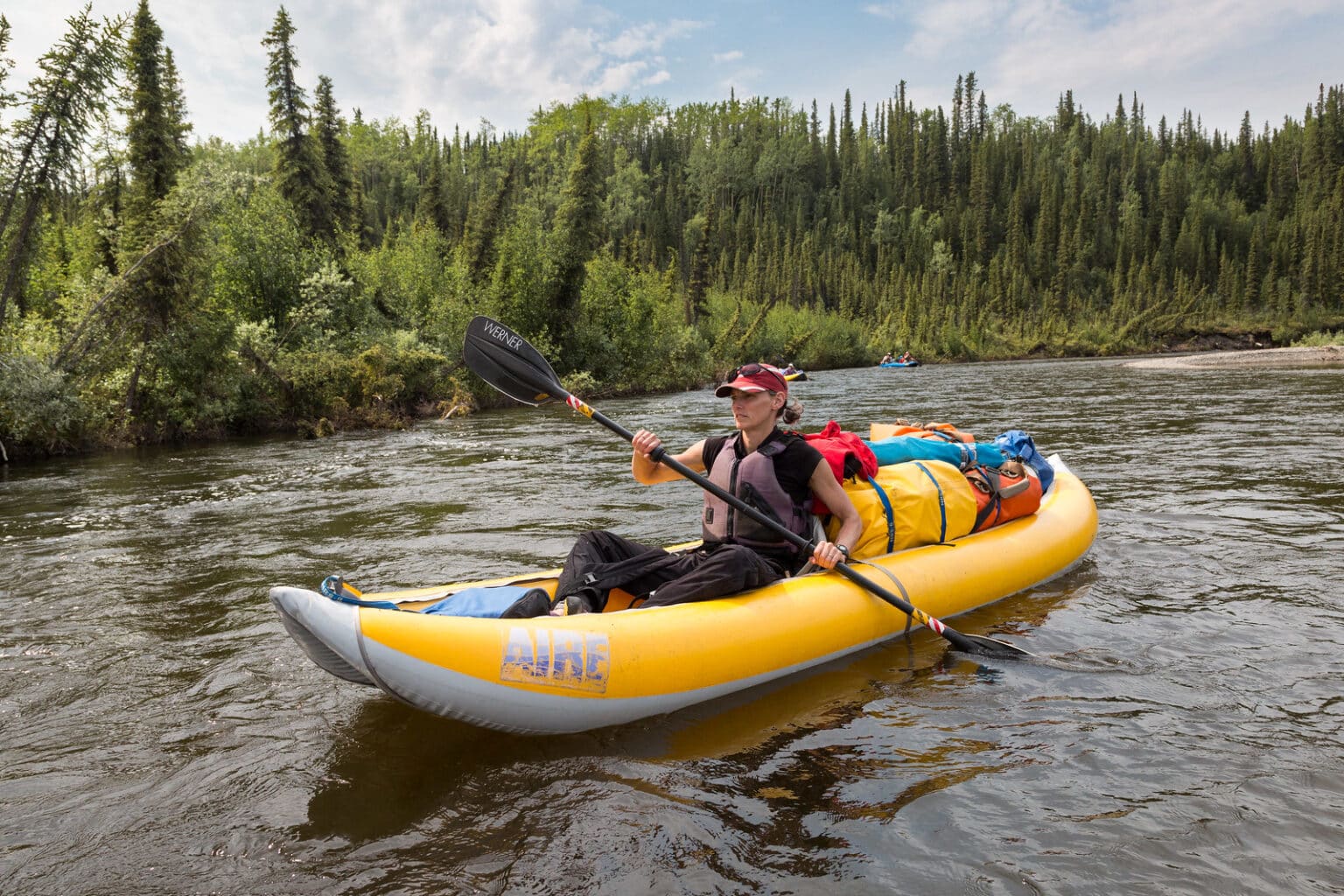
#5 Portability and Storage
Getting to the Water
Sea kayaks, with their longer frames, can be more challenging to transport. They typically require a roof rack and some careful maneuvering to secure them to a vehicle. River kayaks are generally shorter and can be more easily transported, sometimes even fitting inside a larger vehicle or on shorter roof racks.
For those who prioritize portability for recreational paddling, inflatable kayaks and folding kayaks are viable options. These recreational boats offer considerable ease of transport—folding down to fit into a carry bag, they can be transported in the trunk of a car and carried by hand to the water’s edge.
Home Storage Solutions
When it comes to storage, the smaller river kayaks usually require less space and can be conveniently stored in a garage or shed. Sea kayaks may need a dedicated storage system, like wall racks or hoists, due to their length.
Inflatable and folding kayaks present the most convenient storage solutions. They can be deflated or folded down, respectively, into compact sizes that can be stored in closets, shelves, or even under beds, making them ideal for those with limited space.
Whether for transport to the water or storage at home, the kayak’s size and the availability of inflatable or folding options should be matched with the paddler’s lifestyle and storage capabilities. These considerations ensure that getting to the water and keeping the kayak at home is as hassle-free as possible.
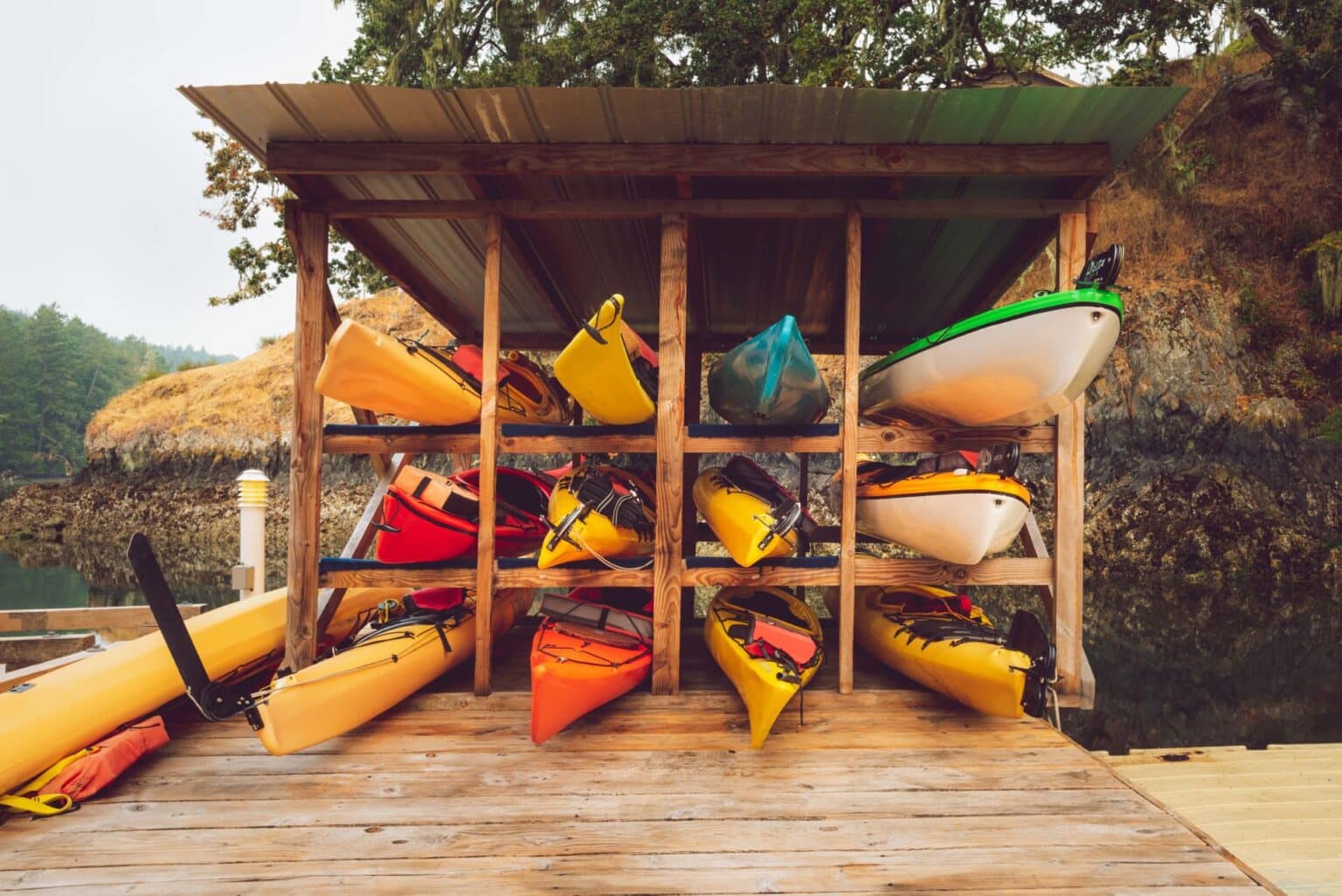
#6 Comfort and Accessories
Seating and Support
In both sea and river kayaks, seating and support systems are designed to provide comfort and efficiency. Adjustable foot pegs or foot braces allow for a custom fit that supports efficient paddling and helps in controlling the kayak. Thigh braces are another common feature, providing additional contact points to improve control during maneuvers, especially in rougher water.
Sea kayaks often have seats with more padding and back support since they are used for longer journeys. The additional cushioning helps reduce fatigue during extended periods on the water. River kayaks also offer supportive seating but prioritize ease of movement for the paddler to respond to rapid changes in water conditions.
Essential Accessories
For accessories, both types of kayaks can be equipped with spray skirts, which are essential in keeping the cockpit dry, especially in choppy river conditions. Deck lines offer crucial attachment points, and paddle holders keep paddles secure when not in use.
Additional accessories for both sea and river kayaks include:
- Paddle floats for self-rescue in open water.
- Helmets, particularly for river kayaking where rocks and other hazards are present.
- Dry bags for keeping personal belongings safe from water.
- Bilge pumps and sponges for water removal.
- GPS devices for navigation in sea kayaks.
These accessories can be tailored to the specific needs of the kayaker, ensuring that they have the most comfortable and functional setup for their time on the water.
#7 Cost: The Price Range For Each Type
When it comes to kayaking, the cost of your vessel can vary widely based on the type and materials used. Sea kayaks, often constructed from high-performance materials like fiberglass or carbon fiber, can command higher prices, reflecting their durability and specialized design. These can range from $1,000 to upwards of $3,000, making them a significant initial investment.
River kayaks tend to be more affordable, with prices starting as low as $300 for basic models, made from simpler materials such as plastic. However, specialized whitewater kayaks designed for rough conditions can also reach into the thousands.
While the upfront cost can be substantial, especially for sea kayaks, the value for money is seen in the long-term durability and performance these kayaks provide. Paddlers should consider their budget alongside their kayaking ambitions to ensure they invest in a kayak that offers the best balance of cost and functionality.
Frequently Asked Questions (FAQ)
Can You Use a Sea Kayak in a River?
While sea kayaks are primarily designed for open water, they can be used in rivers, particularly in larger, slower-moving stretches of water. However, their length may hinder maneuverability in narrower or more rapid sections commonly found in river kayaking environments.
Can You Use a River Kayak in the Sea?
River kayaks can be taken to the sea but are best suited for calm, near-shore waters. Their design, which favors quick turns and stability over straight-line tracking, makes them less ideal for the choppy conditions and long distances typical in ocean paddling.
Is Sea Kayaking Safe?
Sea kayaking can be safe with proper training, equipment, and respect for weather and sea conditions. Wearing a life jacket, understanding self-rescue techniques, and using kayaks designed for sea conditions increase safety significantly.
Is a Sea Kayak and a Touring Kayak the Same?
A sea kayak is a type of touring kayak, but not all touring kayaks are sea kayaks. Sea kayaks are specifically designed for the sea’s challenges, with features like watertight compartments and robust construction, while touring kayaks can also include models suited for long-distance trips on calmer inland waters.
How Much Do Kayaks Weigh?
The weight of kayaks can vary depending on the material and size. Recreational river kayaks may weigh between 35 to 50 pounds, making them easy to carry and transport. Ocean kayaks, built with more durable materials and larger in size, can weigh between 35 to 70 pounds, requiring more effort to transport but providing increased stability and storage capacity in return.
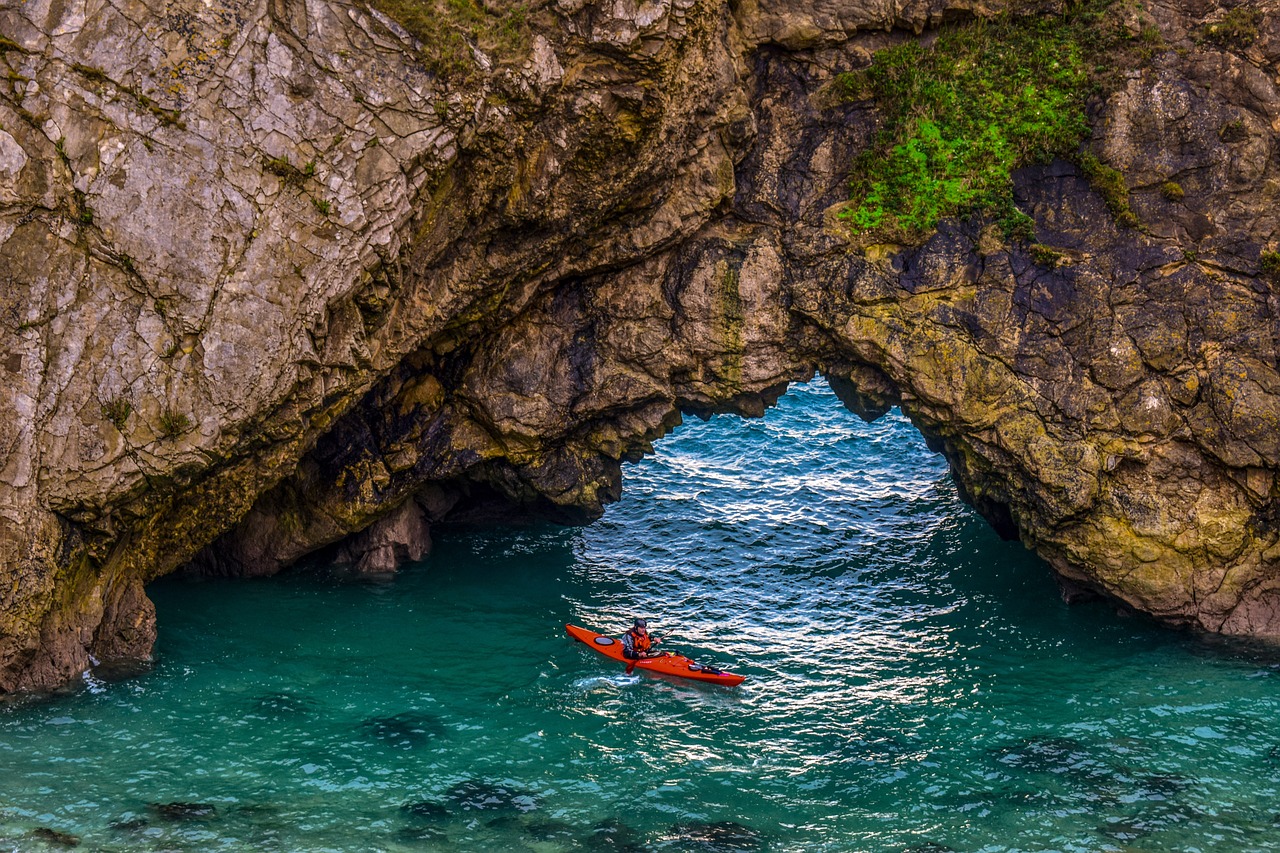
Sea Kayak vs. River Kayak: Which Kayak is Best For You?
Choosing the right kayak is a personal decision that largely depends on the type of kayaking you intend to pursue and your level of experience. For experienced paddlers who crave the thrill of the ocean’s unpredictability, a sea kayak is undeniably suited for the task. Its design caters to long-distance exploration and can handle the challenging conditions of open waters.
Conversely, if your adventures are mostly near rivers or lakes, or if you’re new to the sport, a river kayak might be more appropriate. Its ease of maneuverability and stability makes it a friendlier option for those still honing their skills or for paddlers who enjoy quick access to nearby bodies of water.
Reflect on your proximity to water bodies and consider how often you’ll be traveling with your kayak. The practicality of transport and storage should not be overlooked. Remember, the best kayak for you is the one that aligns with your lifestyle and the environments you most frequently paddle in.
We encourage you to try kayaking if you haven’t already—it’s a rewarding activity that offers both serene solitude and exhilarating adventure. And for those of you who are seasoned paddlers, maybe it’s time to explore a new type of kayak to expand your horizons.

